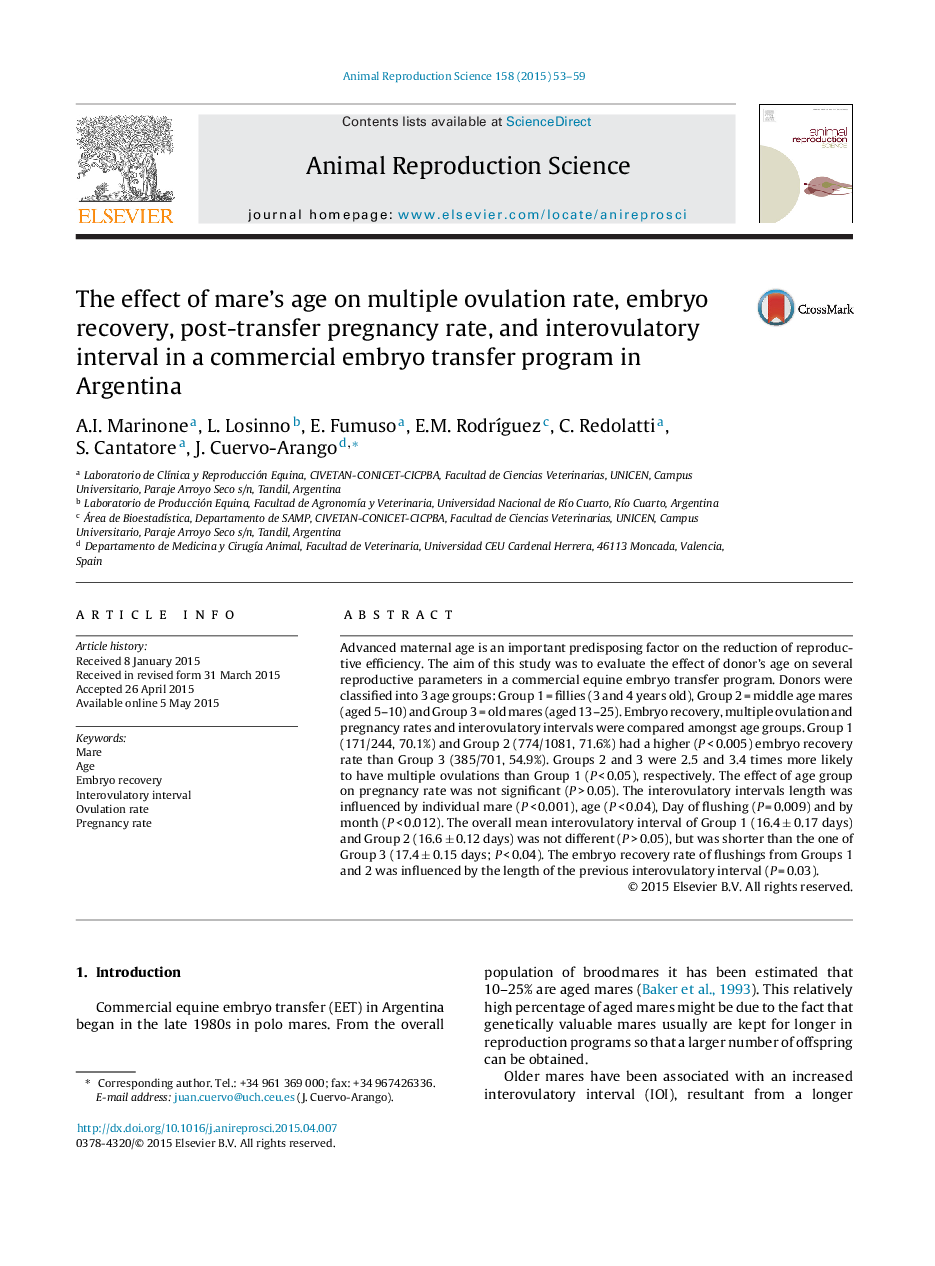| Article ID | Journal | Published Year | Pages | File Type |
|---|---|---|---|---|
| 2072660 | Animal Reproduction Science | 2015 | 7 Pages |
•We characterized the effect of donor's age on different reproductive parameters.•Advanced donor's age is associated with a reduced embryo recovery rate (ERR).•The multiple ovulation rate is highest in old mares.•The interovulatory interval (IOI) is longest in aged mares.•The ERR increases as the IOI becomes longer.
Advanced maternal age is an important predisposing factor on the reduction of reproductive efficiency. The aim of this study was to evaluate the effect of donor's age on several reproductive parameters in a commercial equine embryo transfer program. Donors were classified into 3 age groups: Group 1 = fillies (3 and 4 years old), Group 2 = middle age mares (aged 5–10) and Group 3 = old mares (aged 13–25). Embryo recovery, multiple ovulation and pregnancy rates and interovulatory intervals were compared amongst age groups. Group 1 (171/244, 70.1%) and Group 2 (774/1081, 71.6%) had a higher (P < 0.005) embryo recovery rate than Group 3 (385/701, 54.9%). Groups 2 and 3 were 2.5 and 3.4 times more likely to have multiple ovulations than Group 1 (P < 0.05), respectively. The effect of age group on pregnancy rate was not significant (P > 0.05). The interovulatory intervals length was influenced by individual mare (P < 0.001), age (P < 0.04), Day of flushing (P = 0.009) and by month (P < 0.012). The overall mean interovulatory interval of Group 1 (16.4 ± 0.17 days) and Group 2 (16.6 ± 0.12 days) was not different (P > 0.05), but was shorter than the one of Group 3 (17.4 ± 0.15 days; P < 0.04). The embryo recovery rate of flushings from Groups 1 and 2 was influenced by the length of the previous interovulatory interval (P = 0.03).
